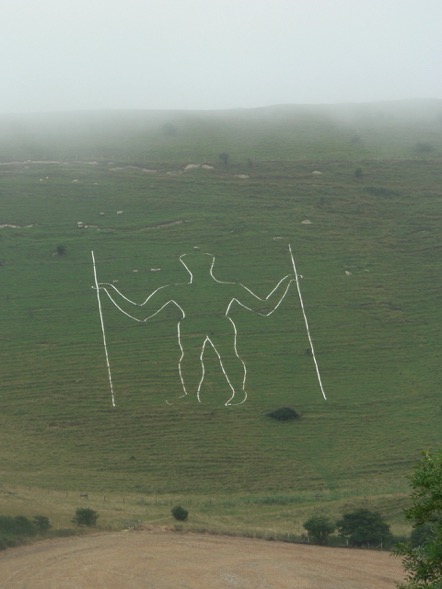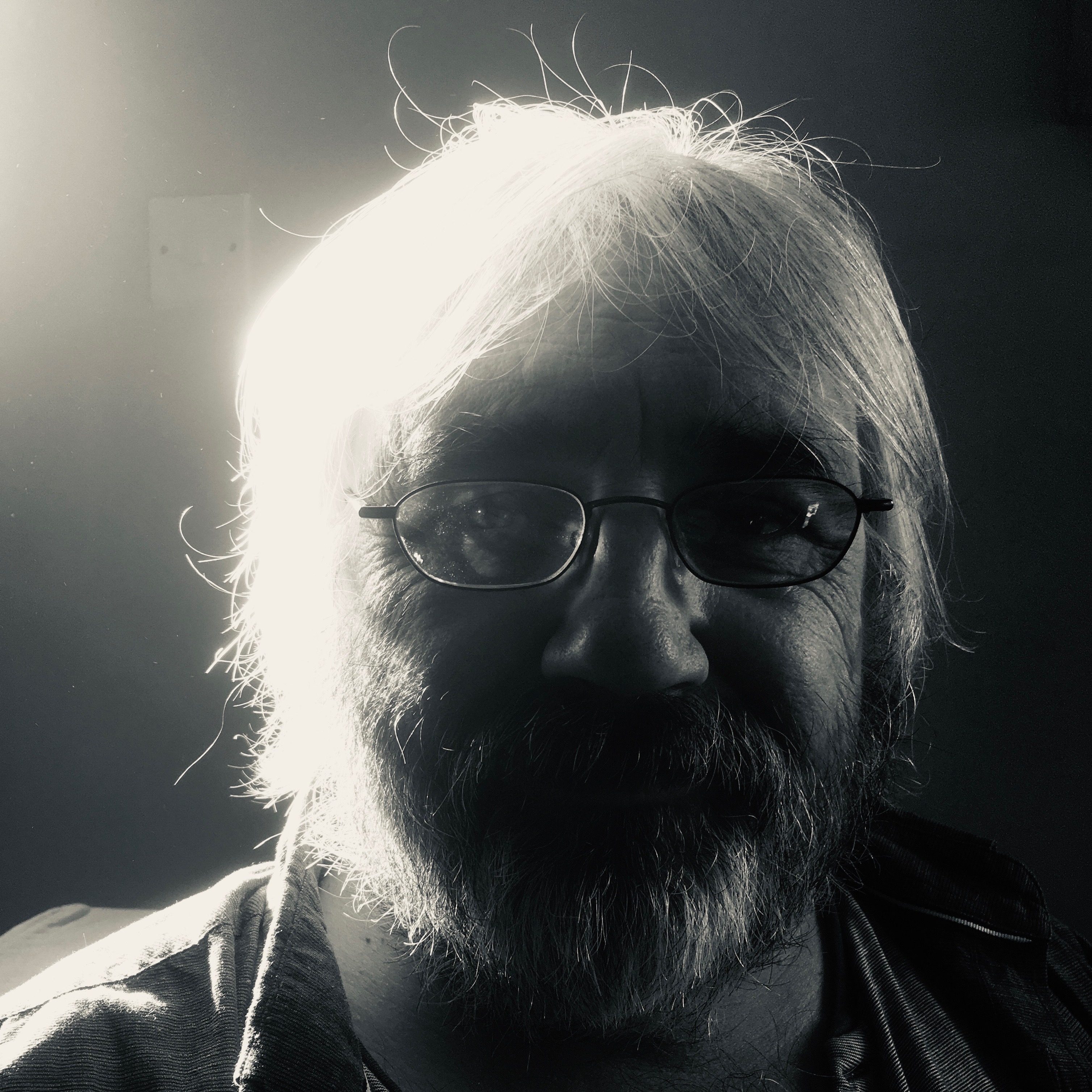The Short, Fat Man of Wilmington
08 01, 09 Filed in: Strange Days | Everything

Eventually, I discover how to avoid the worst of it by lying down on a low bank that faces the Long Man of Wilmington – the fabulous, 230 foot-high hill figure on the South Downs and the reason why both the car park and I are here in the first place.
I become the damp and dumpy simulacrum of the giant on the hill - the Short, Fat Man of Wilmington (Car Park) - and just lie there for half an hour, gazing up at my brother on the aptly named Windover Hill, his head in the low clouds that lumber over the South Downs.
I am here for Lughnasadh - pronounced loo-na-sa - an important date in the celtic year, a harvest thanksgiving roughly approximate to Lammas, the Anglo-Saxon and Christian festival of the first-ripening fruits. Of all days, today does not feel like the end of summer and I wonder how many will attend.
I need not have worried. Around forty-five people gather in the car park and begin to make their way up the hill, among them Dave and Cerri, the facilitators of the druid group that is holding today’s open ritual - Anderida Gorsedd. The number of people here is a tribute to the group who have been holding open rituals here, no matter what the weather, since Spring 2000 - this being the 76th such gathering. But Dave, a lion of a man who has the aura of a congenial giant about him, nevertheless seems a little troubled by person number 46, me.
“People have lost their jobs before, after being identified in the local papers as pagans or druids”, he says and, indeed, it’s not the first time that I’ve heard this, “so we’re not seeking publicity.”
As I chat with Cerri - a jovial soul in a jumper emblazoned with a huge sun motif - Dave wanders off to greet some old friends but is soon back with a relaxed smile on his face and hurtles towards me with arms outstretched.
“Oh and welcome, of course. You are going to join in with the circle, aren’t you?”
“I wouldn’t miss it for the world”, I tell him.
The forty-five of us gather halfway up the hill on a wide, round, flat-topped hummock - which looks suspiciously as though it was built for this very purpose - just below the feet of the Long Man. I stand next to Sylvia, who tells me of her mother who had one brown and one blue eye and a witch-ish grey streak of hair from a young age. But despite that, Sylvia was still christened and it was only circumstances later in life that brought her into the Wiccan tradition. “Me and my husband both lost parents and we wanted to find something that brought us both happiness and this is what this is.”
At this point our conversation is rudely interrupted by the ritual we had come to participate in. Having attended similar events before, I’m looking forward to the singing, which is odd as I have an awful voice that I don’t usually like to bother others with. On a windy hillside, for some reason, I’m not so shy.
Pagans are the jazz musicians of the theological world, however. They like to improvise, throw in some bardic ad-libs or riff a little on poetry, so there’s no set pattern to rituals beyond opening and closing the circle, calling the elements and the hail and farewells. I admire this approach but - basically - bang goes the sing-song, leaving only the ‘awen’ to tackle, a kind of 15 second long ‘amen’ chanted three times after the druid’s prayer. It is unspeakably beautiful and fully justifies its billing as the breath from which inspiration flows. As the last chant tails off and all chances for me to find the right key evaporate, a sheep grazing on the Long Man bleats in perfect harmony.
The centrepiece of Lughnasadh is the symbolic sacrifice of John Barleycorn, the corn god. With his arms outstretched and fists clenched, a golden sickle is drawn across his throat. He falls to his knees and releases the ripe grain he holds in his hands. It’s hard-hitting stuff artfully done on a hillside, but that’s the essence of pagan life.
As the circle is closed, each direction is thanked in turn. Finally, we all face east and thank the gods of air, who respond by ripping the final hail and farewell from our mouths with a remarkable gust of wind. Hail and farewell indeed.
blog comments powered by Disqus
